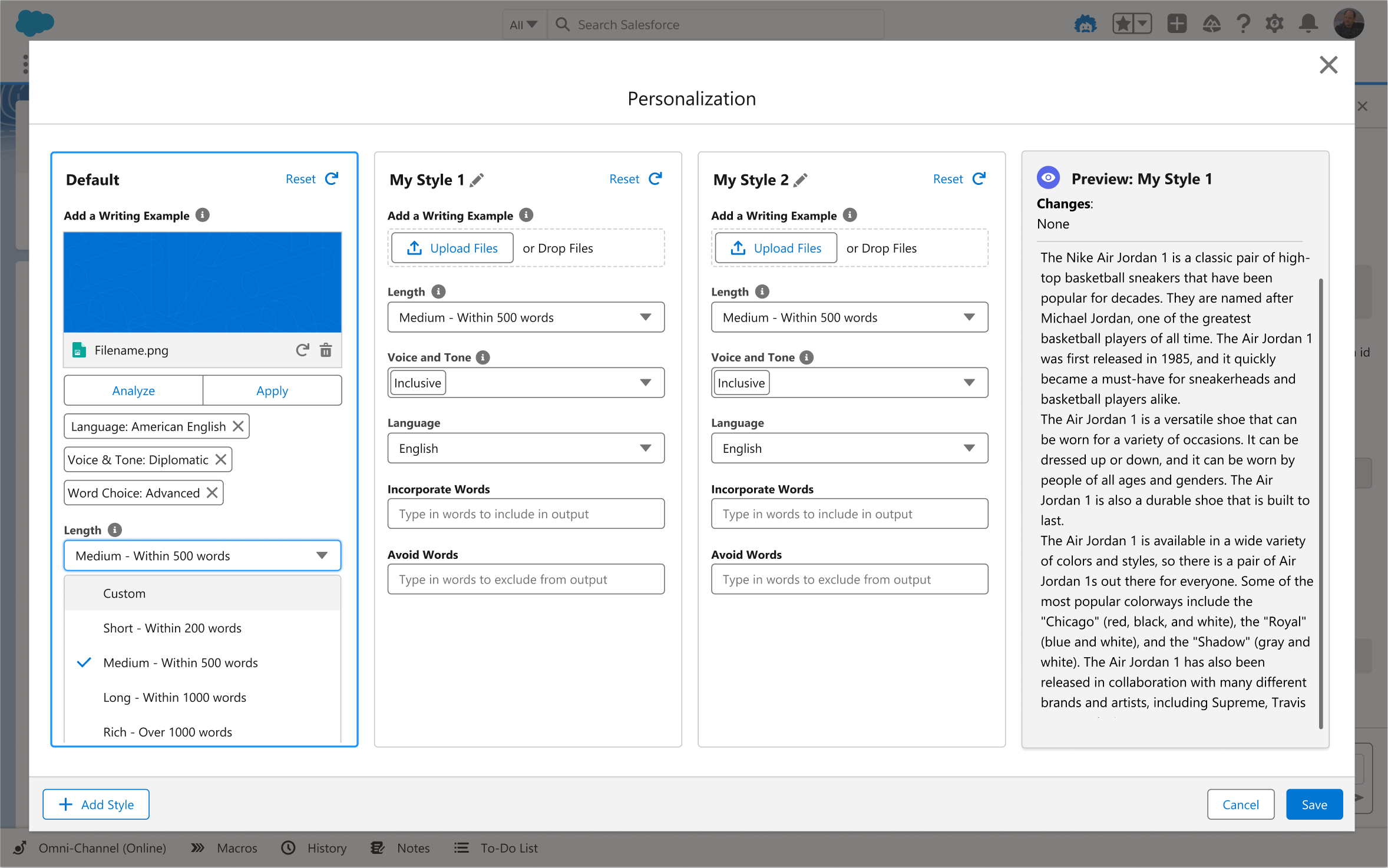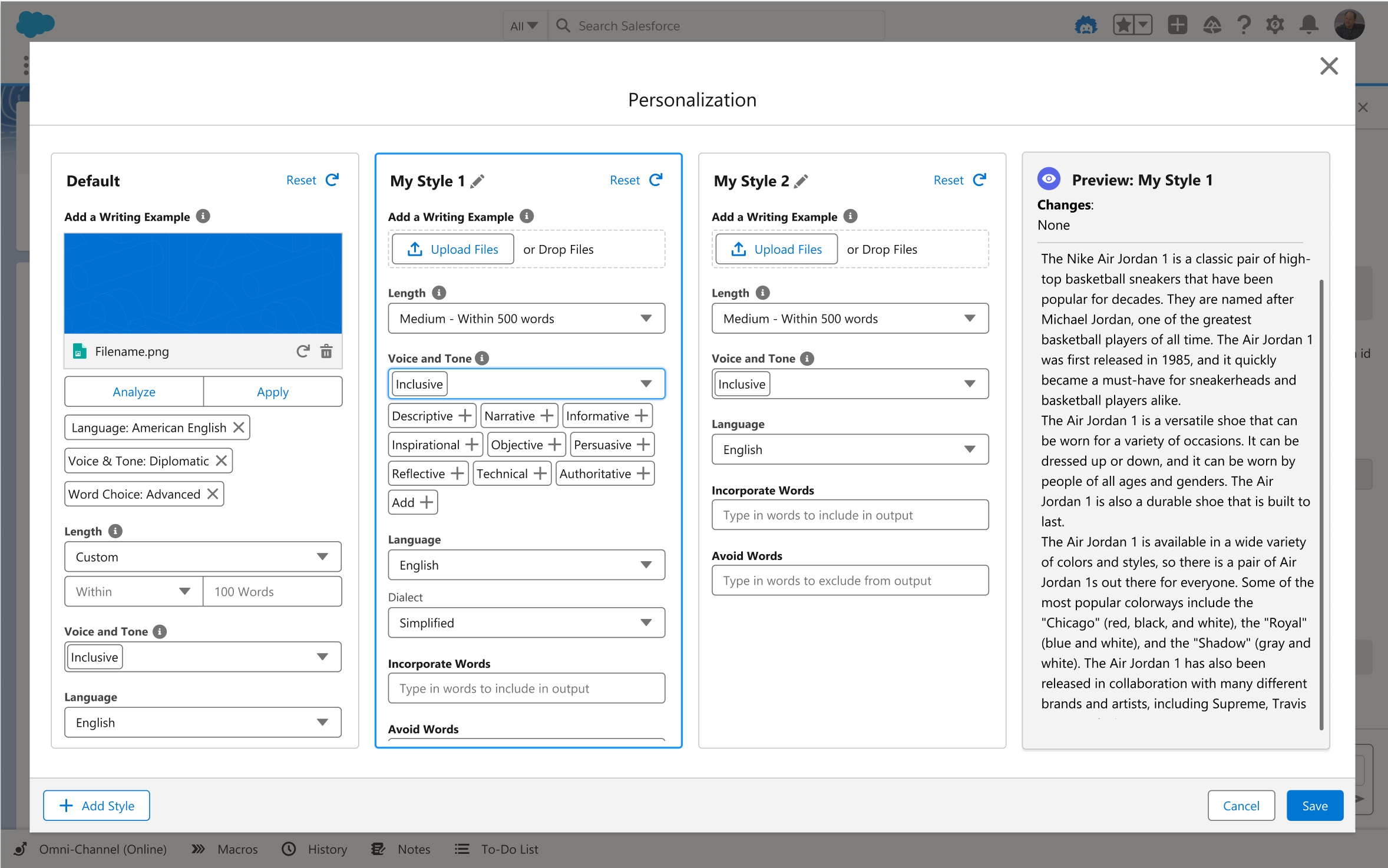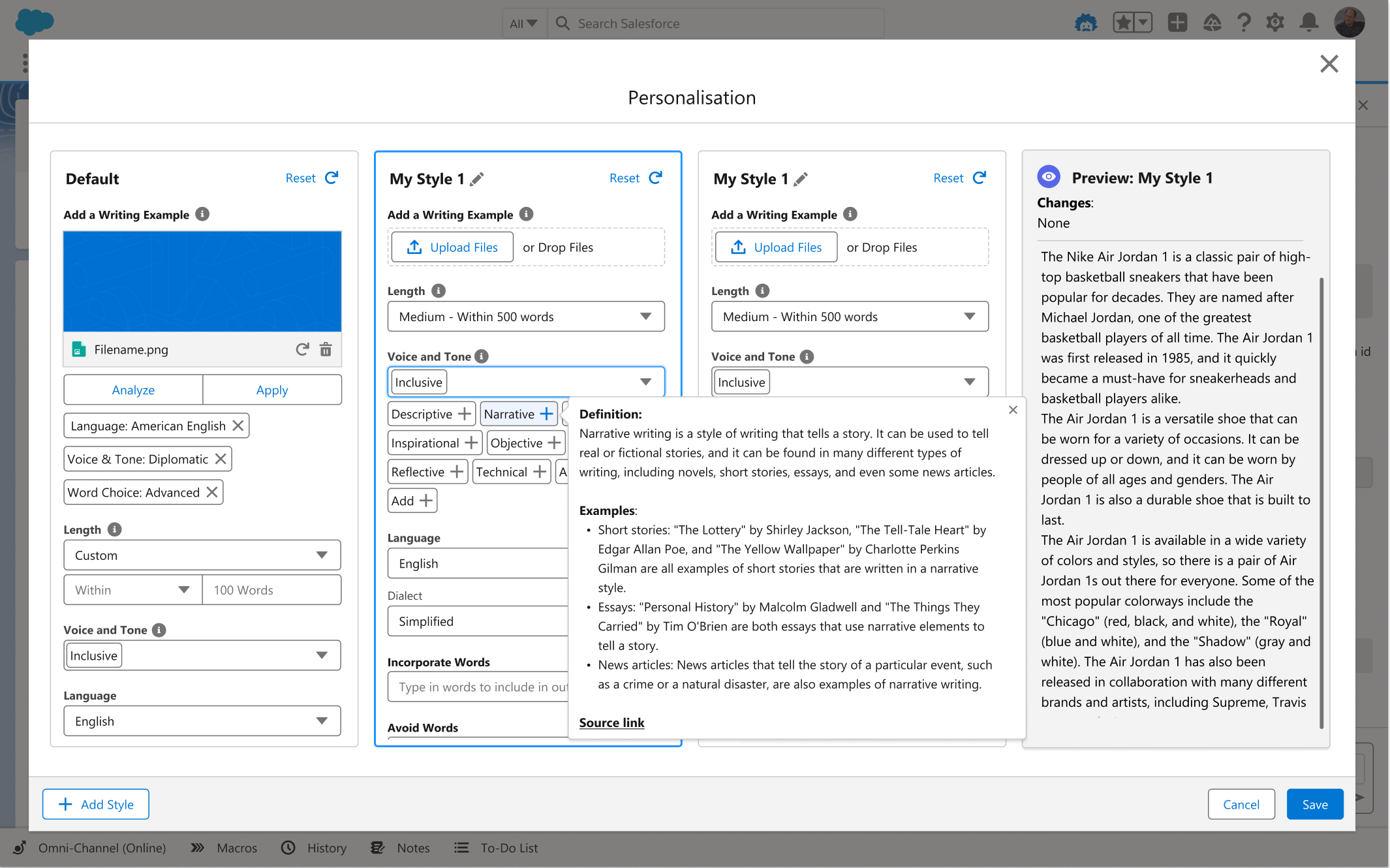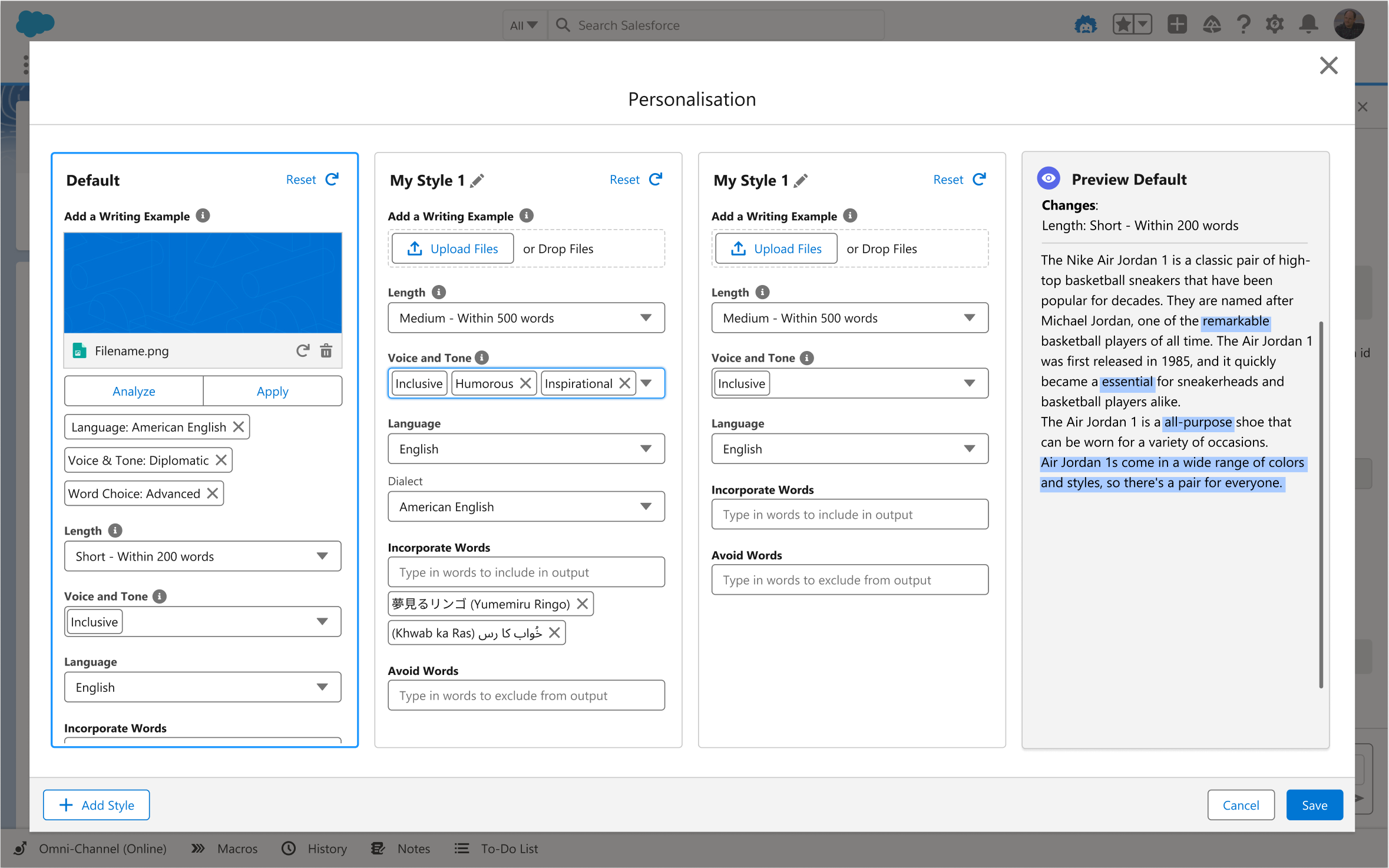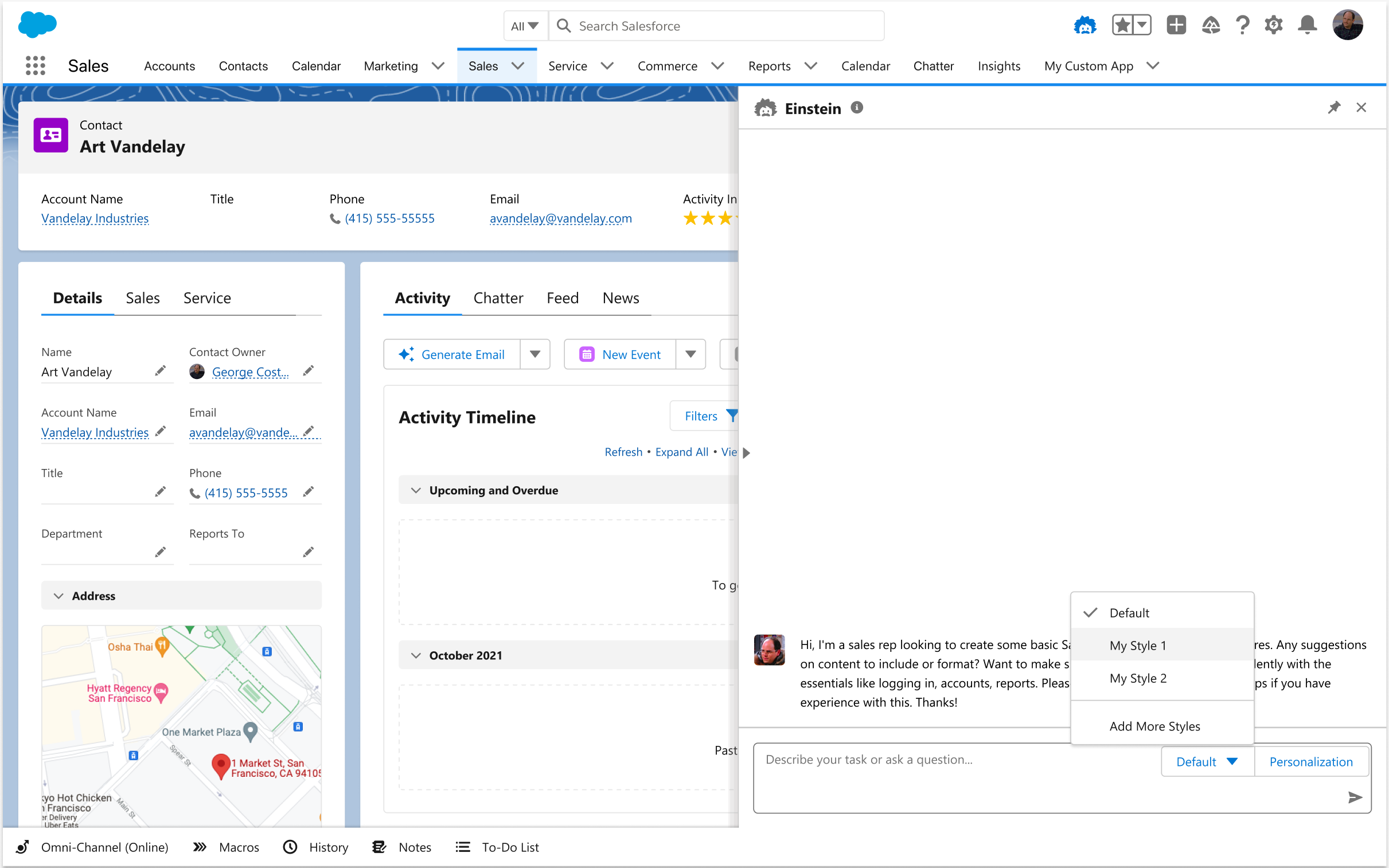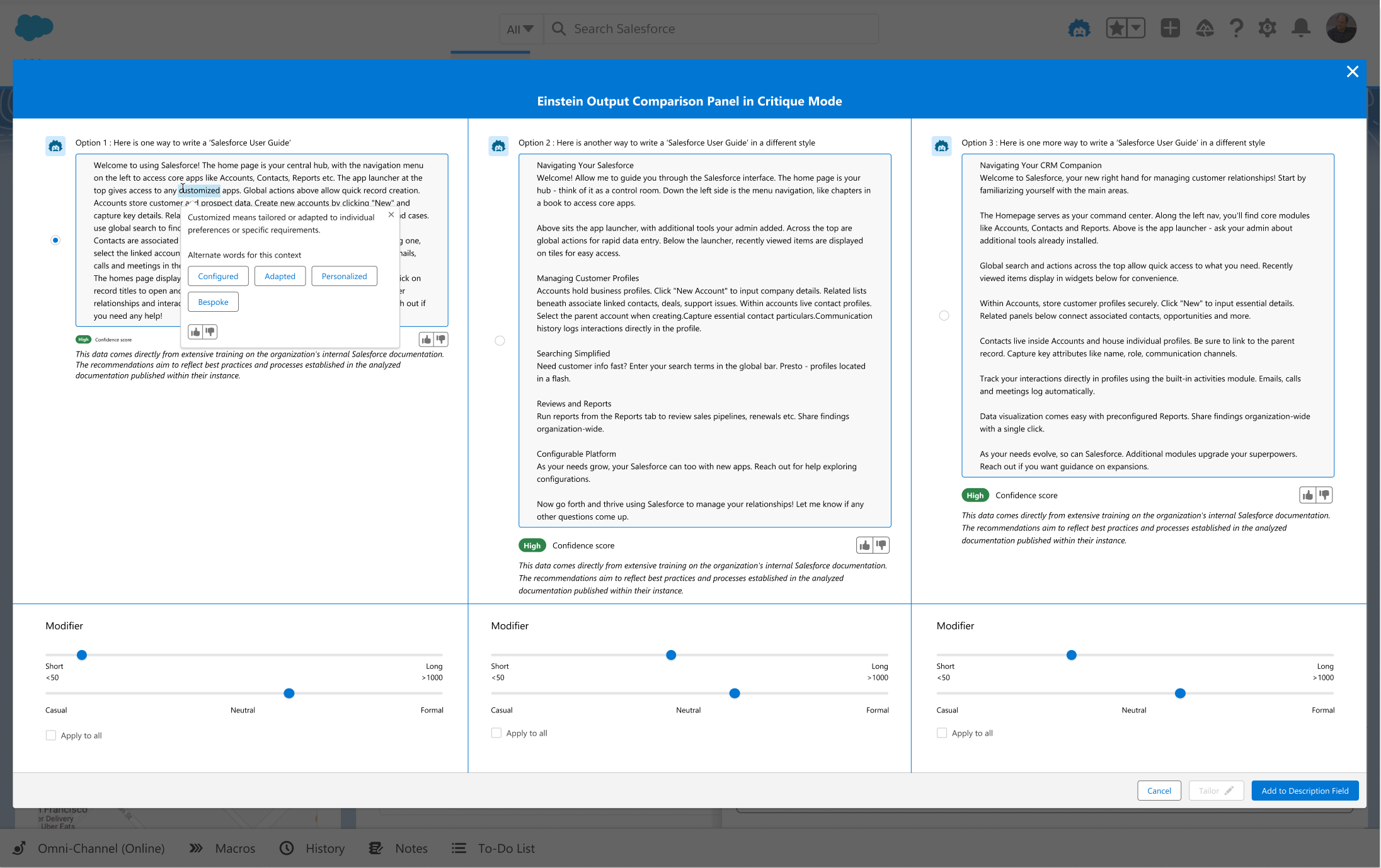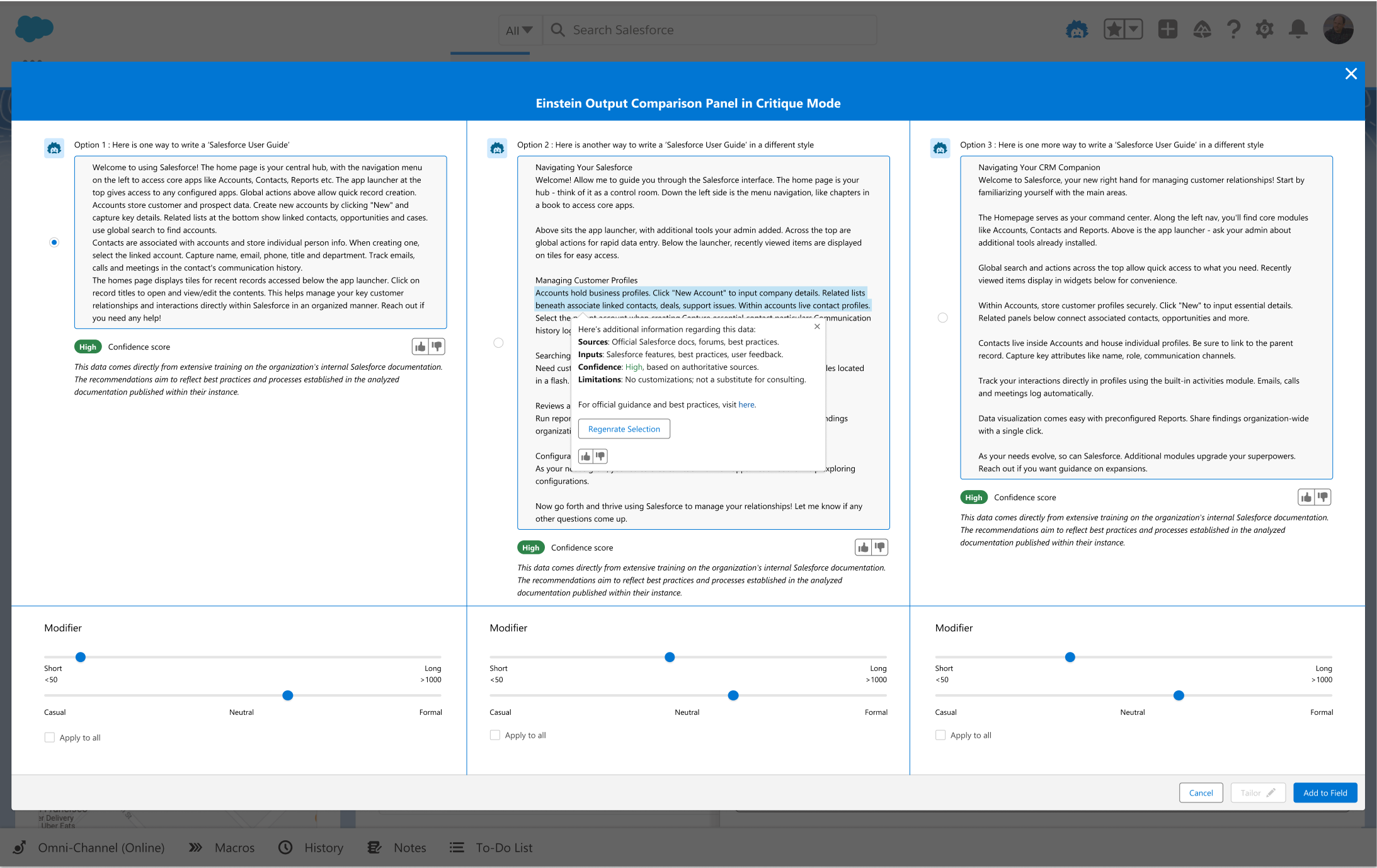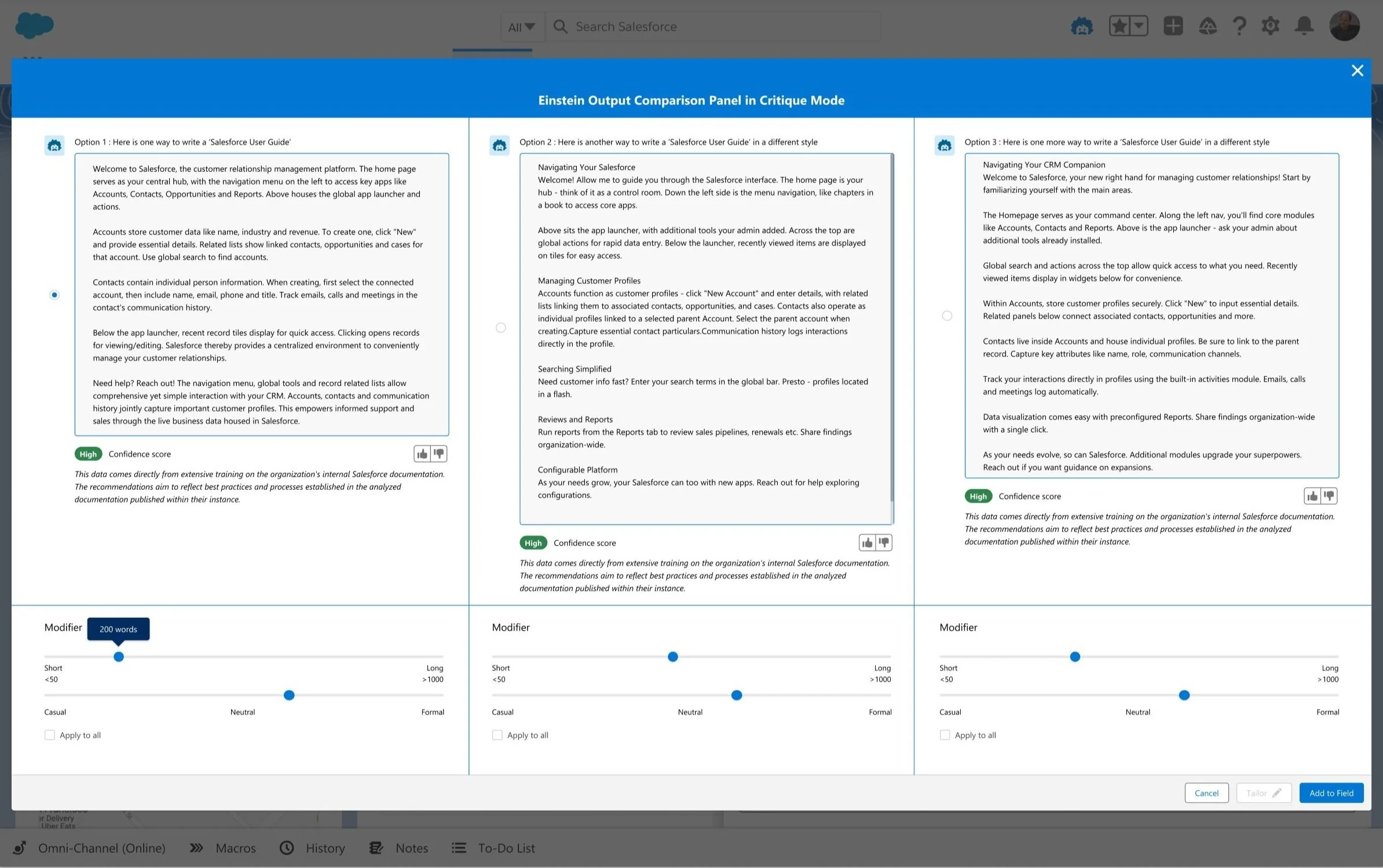Hackathon Overview
"Einstein for People" was the winner of the "Most Impactful Hack for Trusted AI Leadership" award at the Salesforce T&P Trusted Generative AI Hackathon. This project, developed in just 60 hours, demonstrates two powerful features that highlight Salesforce's dedication to ethical AI development and the transformative potential of responsible and trusted AI applications.
Executive Judging Panel
Paula Goldman
Chief Ethical & Humane Use Officer
Madhav Thattai
COO, Salesforce AI
Kat Holmes
EVP, Chief Design Officer
Jayesh Govindarajan
SVP, Engineering
Boris Gamazaychilkov
Senior Manager, Emissions Reduction
The participant guide
-
Accuracy (i.e. accuracy of models, confidence scores, bias, data)
Safety (i.e. red-teaming, safety filter, PII masking)
Honesty (i.e. hallucinations, transparency, data provenance)
Empowerment (i.e. augment human jobs, accessibility)
Sustainability (i.e. carbon footprint of our own models)
-
Trust Layer: What can we do to make our Trust Layer most trusted as we move toward autonomous AI?
Multi-modal: How do we approach security, bias, and toxicity checks for image models?
Red-teaming: Are there other ways to ethically hack our models to ensure safe and non-toxic outputs?
Ethical design patterns: How might our products be designed more responsibly, taking into account end users?
-
Best Hack for Accuracy
Best Hack for Safety
Best Hack for Transparency
Best Hack for User Empowerment
Best Hack for Sustainability
Most Impactful Hack for Trusted AI Leadership
People’s Choice Winner
-
Do not enter a hackathon project you previously worked on or submitted for another event.
My Role
As the lead for a Gen AI hackathon, I assembled a cross-functional team, including an AI UX researcher and a UX designer. I coordinated our efforts from start to finish:
Brainstormed new features with the AI UX researcher.
Guided the design and prototyping process alongside the UX designer.
Focused on the design and product vision while delegating logistics and the final presentation to the team.
This approach ensured a clear division of responsibilities, allowing us to deliver an innovative and cohesive project.
Design Process
We brainstormed over 20 ideas, then narrowed them down, aligning with the submission guidelines and judging criteria. From this, we developed two key features.
Short hackathon timeframe from September 26th, 8:00 AM to September 28th, 9:00 PM.
A team consisting of one UX researcher and two UX designers
The project's features and impact were effectively demoed through a concise three-minute presentation.
Feature 1: Personalization
User Needs:
Many users manage multiple roles simultaneously, handling tasks such as responding to customers, creating presentations, and emailing clients. With varying communication needs and diverse client expectations, a generic, one-size-fits-all approach to text generation often falls short, leading to inefficiency and frustration.
Solution:
We've developed a personalization tool that empowers users to create up to three unique text generation styles. This tool allows users to:
Mimic Writing Styles: Copy the style of specific authors or documents.
Customize Length: Adjust the output's length to fit different contexts.
Fine-tune Style: Tailor the tone, formality, and vocabulary to match desired communication styles.
Select Language: Choose the language for text generation.
Specify Words: Include or exclude specific words or phrases.
Users can preview their customized styles and save them for future use.
Feature 2: Edit Output
User needs
Users need a variety of customizable options to start with, the ability to edit generated content, and a simple interface for exploring and refining their choices. This allows them to find the best fit for their specific needs and objectives.
Solutions
This feature provides three initial options for users to choose from.
Users can customize and refine these options to suit their specific needs.
Users can edit the generated content.
Users can explore additional options for more tailored results.
Hackathon Submission
Key Focus Areas:
User-Centric Solutions: Prioritized addressing user needs and pain points.
Personalization: Enabled users to customize text generation styles.
User Control: Empowered users to maintain control over their content style.
Multi-Modal Design: Incorporated a versatile approach that combined different AI models.
Enhanced Accuracy and Transparency: Strived to improve the accuracy and transparency of generated content.
Result & Impact
We were honored to receive the Most Impactful Hack for Trusted AI Leadership out of 55 submissions. This recognition highlights the significance of our project in promoting responsible AI practices. Additionally, the Prompt Builder team recognized the potential of our design and integrated key elements into their product development, demonstrating the broader impact of our work on the community and the future of AI solutions.
“Y’all ROCKED IT. Congrats on a great project idea. Your demo was a great example of the kind of work we need to do to make sure they can be successful with AI. And your work was deeply rooted in human behavior and how people prefer to communicate”










